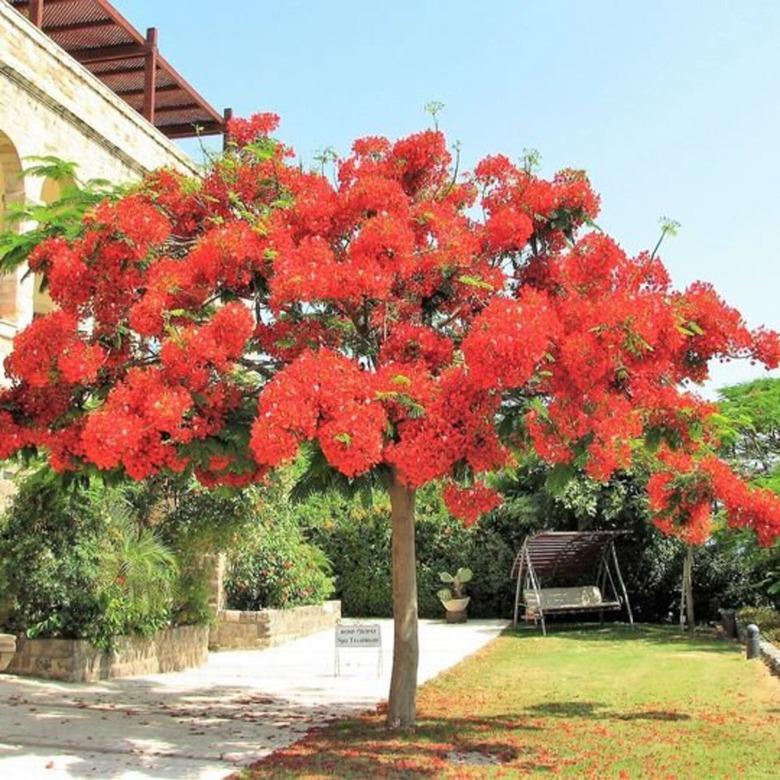How To Use A Royal Poinciana For Bonsai
The royal poinciana, or Delonix regia, comes with many names. Known as the flame tree, fire tree, and flamboyant tree, the royal poinciana produces large, fiery red or golden blooms that blossom from spring through summer in U.S. Department of Agriculture plant hardiness zones 10 through 12. This fast-growing, deciduous to evergreen tree, depending on the climate, develops fernlike foliage and takes on a natural umbrella shape. Its tolerance to poor soils and hard pruning makes it easy to use a royal poinciana for a bonsai tree.
How to Plant and Prune the Royal Poinciana
1. Put on Protective Gear
Put on gloves, safety goggles and a dust mask before working with the potting mix and planting the royal poinciana.
Choose a wide, shallow planting container to accommodate the wide-spreading root system of the royal poinciana. Be sure to select a bonsai container with several drainage holes to promote a well-drained loam.
Incorporate equal amounts of coarse sand, nutrient-rich potting soil and organic compost, such as pine bark. Add a pinch of pure sphagnum moss to the mixture to increase the mixture's water retention.
Cover each of the potting container's drainage holes with mesh to prevent it from washing out of the pot. Fill the bottom third of the container with the mix.
Center the royal poinciana in the container and fill the remaining two thirds of the container with your soil mixture. Tamp gently and add more potting mix as needed.
Irrigate the newly potted poinciana with tepid water to promote a good establishment. Water the bonsai evenly and thoroughly until the excess drains from the holes.
Water the bonsai deeply and infrequently to provide a slightly dry environment. Check the loam's moisture levels daily and water your poinciana bonsai when the soil begins to feel dry. Never allow this bonsai to dry out completely and avoid overwatering the poinciana, to prevent root rot.
Fertilize your poinciana bonsai in the early spring, just as the growing season begins, with a balanced, slow-release fertilizer, such as an 8-8-8 or 10-10-10 formulation. Fertilize the bonsai again in midsummer. Avoid heavy fertilization as it will reduce the number of blooms in order to produce heavier foliage. Allow the young poinciana bonsai as long as five years to produce its first blooms.
Dip the blades of your cutting tools in rubbing alcohol before pruning your plant. Put on your gloves and safety goggles to protect your hands and eyes as you prune and shape the bonsai.
Prune this vigorous grower to maintain its health and bonsai form. Hard prune the tree in the early spring just before the growing season begins. Remove dead, damaged and wilted branches and stems. Trim back branches to promote the desired shape.
Prune the bonsai several times throughout the growing season. Thin the interior branches and stems to increase light penetration and air circulation throughout the tree. Prune back vigorous growing branches to maintain shape. Always use sharp, alcohol- sanitized pruning shears.
Root-prune this bonsai when repotting. Use sharp, sanitized shears to trim back about a third of the root system. Trim deadened roots back to the root mass, then trim healthy roots as needed. Repot the poinciana bonsai on fresh potting mix in a clean container.
